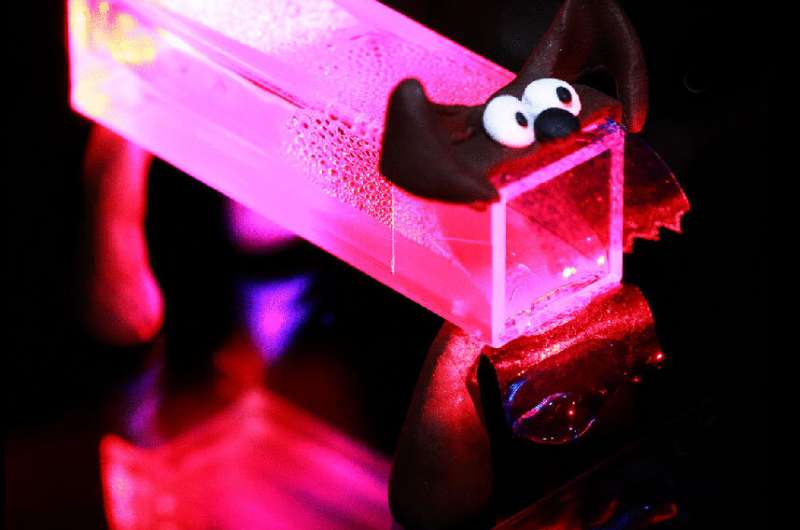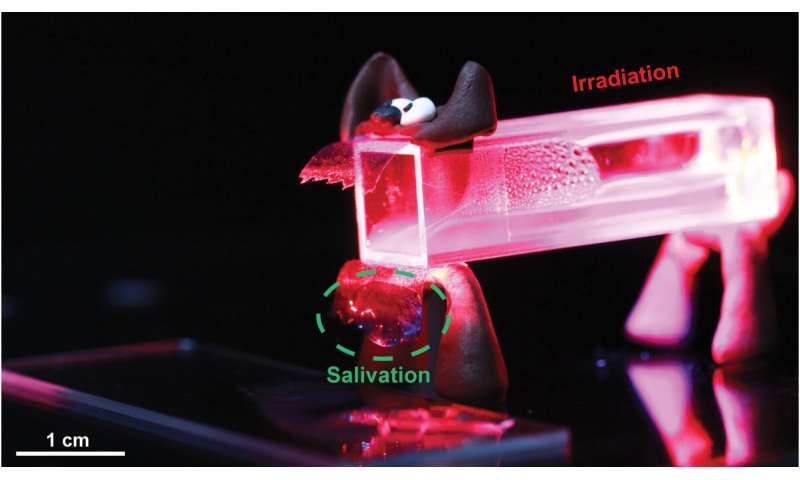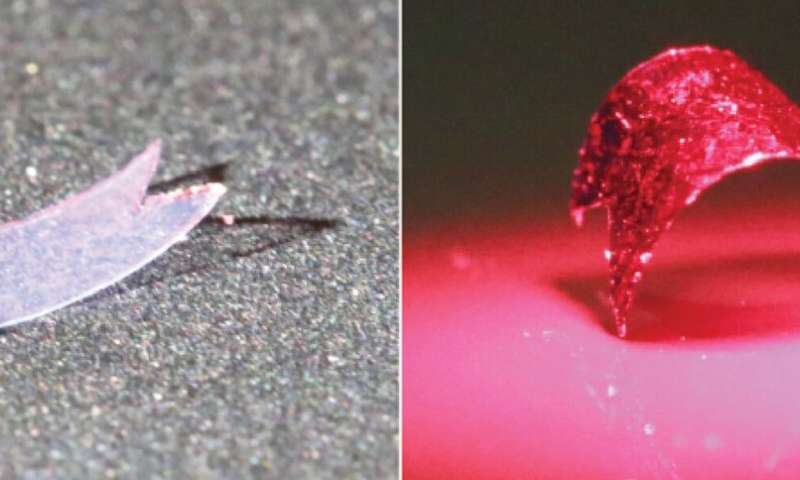Like Pavlov's dog, this thermoplastic is learning a new trick: walking

Researchers in Finland are "training" pieces of plastic to walk under the command of light. The method developed, published December 4 in the journal Matter, is the first time a synthetic actuator "learns" to do new "tricks" based on its past experiences, without computer programming.
These plastics, made from thermo-responsive liquid crystal polymer networks and a coat of dye, are soft actuators that can convert energy into mechanical motion. Initially, the actuator is only respondent to heat, but by associating light with heat, it learns to respond to light. In response, the actuator similarly bends itself as a human curls its index finger. By irradiating the actuator periodically, it "walks" like an inchworm with a speed of 1 mm/s, about the same pace of a snail.
"Our research is essentially asking the question if an inanimate material can somehow learn in a very simplistic sense," says senior author Arri Priimägi, of Tampere University. "My colleague, Professor Olli Ikkala from Aalto University, posed the question: Can materials learn, and what does it mean if materials would learn? We then joined forces in this research to make robots that would somehow learn new tricks." The research team also includes postdoctoral researchers Hao Zeng, Tampere University, and Hang Zhang, Aalto University.
The conditioning process, which associates light with heat, allows the dye on the surface to diffuse throughout the actuator, turning it blue. The phenomenon increases the overall light absorption, which boosts the photothermal effect and raises the actuator's temperature. It then "learns" to bend upon irradiation.
"This study that we did was inspired by Pavlov's dog experiment," says Priimägi. In the experiment, a dog salivates in response to seeing food. Pavlov then rang the bell before giving the dog food. After a few repetitions, the dog associated food with the bell and started salivating upon hearing the bell. "If you think about our system, heat corresponds to the food, and the light would correspond to the bell in Pavlov's experiment."
"Many will say that we are pushing this analogy too far," says Priimägi. "In some sense, those people are right because compared to biological systems, the material we studied is very simple and limited. But under right circumstances, the analogy holds." The next step for the team is to increase the level of complexity and controllability of the systems, in order to find the limits of the analogies that can be drawn to biological systems. "We aim at asking questions which maybe allow us to look at inanimate materials from a new light."
-

An artificial Pavlov's dog created from programmable liquid crystal polymer networks that 'learn' to respond to light after association with heating. Credit: Zeng and Zhang et al. -

Light makes the conditioned liquid crystal move. Credit: Aalto University, Tampere University, Cell Press
But besides walking, the systems can also "recognize" and respond to different wavelengths of light that correspond to the coating of its dye. This characteristic makes the material a tunable soft micro-robot that can be remotely controlled, an ideal material for biomedical applications.
"I think there's a lot of cool aspects there. These remotely controlled liquid crystal networks behave like small artificial muscles," says Priimägi. "I hope and believe there are many ways that they can benefit the biomedical field, among other fields such as photonics, in the future."
More information: Matter, Zeng and Zhang et al.: "Associative Learning by Classical Conditioning in Liquid Crystal Network Actuators" www.cell.com/matter/fulltext/S2590-2385(19)30289-9 , DOI: 10.1016/j.matt.2019.10.019
Provided by Cell Press




















